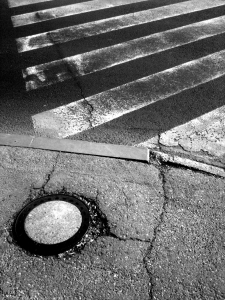 Two pedestrians died on Sunday, March 25 after crossing the street mid-block. SFGate reports that Thomas Ferguson (45) was crossing Lombard Street between Van Ness and Franklin when a car struck him. Ferguson died on the scene. Earlier that day, a man was hit by a Muni bus when he emerged between two parked cars to cross Fillmore Street. KTVU.com reports that he was rushed to the hospital, but declared dead shortly thereafter.
Two pedestrians died on Sunday, March 25 after crossing the street mid-block. SFGate reports that Thomas Ferguson (45) was crossing Lombard Street between Van Ness and Franklin when a car struck him. Ferguson died on the scene. Earlier that day, a man was hit by a Muni bus when he emerged between two parked cars to cross Fillmore Street. KTVU.com reports that he was rushed to the hospital, but declared dead shortly thereafter.
According to a study by UCSF, Profile of Injury in San Francisco (2004), more pedestrians died in San Francisco over the last ten years than motor vehicle occupants, while the state average varies from 17.2%-20.2% per year. Moreover, the national average for pedestrian fatalities among all crash fatalities is much lower at around 12%. Part of the higher rate is due to the urban nature of many California cities, including San Francisco. For example, the most pedestrian fatalities and injuries alike were concentrated in downtown San Francisco and other high traffic areas, as shown in the study named Cost of Auto versus Pedestrian Injuries in San Francisco, 2004-2008.
The logical conclusion is that areas with more pedestrian deaths require more measures to protect pedestrians and encourage safer behavior by both pedestrians and drivers. In 2002, San Francisco was one of three cities, along with Las Vegas and Miami, to be chosen for a PedSafe Study because of the high rate of pedestrian fatalities. The study tested various traffic signs and street markings to identify the most effective methods to promote pedestrian safety.
The most effective measures included flashing beacons at crosswalks without traffic signals, signs that reminded drivers to watch out for pedestrians, and head start crossing for pedestrians at intersections where cars make relatively more unprotected left turns.
An article by Wray Herbert on the Association for Psychological Science website, cites a University of London study that found the reason children under 15 years old are more likely to be injured by cars, is not limited to lack of attention to potential dangers. In fact, children are less likely to see oncoming vehicles at all because they are physically smaller. In addition, their brains have a harder time than adults judging the rate at which cars driving at different speeds will approach them.
These two studies help root out the causes of pedestrian injuries and deaths at all ages. One reason appears to be the visibility of both cars and pedestrians. Flashing beacons, head start intersections, and raised curbs help improve the visibility of pedestrians to vehicles, and also help pedestrians assess possible dangers when traversing the street. The above accidents also demonstrate that crossing in designated intersections is important, because pedestrians are more visible to vehicles at crosswalks.
Another reason highlighted by both the March 25 crashes and the studies is the issue of right of way. Although Californian pedestrians always have the right of way by law, traffic measures are implemented to make driving, walking, and biking safer and require that pedestrians sometimes temporarily give up the right of way for their own safety. Pedestrians often cross against lights and without the protection of crosswalks because they are sure they can make it across in time. As the tragic accidents at Lombard Street and Fillmore Street show, this is a dangerous state of mind. However, pedestrians are also struck when they obey all traffic laws. For instance, cars make premature left and right turns through intersections where they are supposed to yield to pedestrians, because, similar to the previous example, drivers think they can “make it” before the pedestrian reaches the end of the intersection. Thus, the PedSafe Study found that signs, markers, and head start intersections successfully reminded many drivers to yield to pedestrians.
Continue Reading ›
 On September 9, 2010, a pipeline explosion occurred near Skyline Boulevard and San Bruno Avenue in San Bruno’s Crestmoor neighborhood. The explosion and resulting fire left eight people dead, completely destroying thirty-eight homes and damages many more properties. Pacific Gas and Electric (“PG&E”), the company responsible for operating the pipeline, dismissed allegations that the pipeline was being operated at an elevated, dangerous, and illegal level of pressure. The current Chronicle investigation revealed that at least three segments in the San Bruno natural gas pipeline were being operated at an illegally high pressure level.
On September 9, 2010, a pipeline explosion occurred near Skyline Boulevard and San Bruno Avenue in San Bruno’s Crestmoor neighborhood. The explosion and resulting fire left eight people dead, completely destroying thirty-eight homes and damages many more properties. Pacific Gas and Electric (“PG&E”), the company responsible for operating the pipeline, dismissed allegations that the pipeline was being operated at an elevated, dangerous, and illegal level of pressure. The current Chronicle investigation revealed that at least three segments in the San Bruno natural gas pipeline were being operated at an illegally high pressure level. San Francisco Injury Lawyer Blog
San Francisco Injury Lawyer Blog













 Two pedestrians died on Sunday, March 25 after crossing the street mid-block.
Two pedestrians died on Sunday, March 25 after crossing the street mid-block. 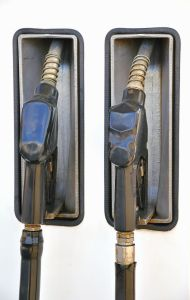 California has long been known for our driving-oriented culture. As a result, the increase in prices at the pump hits out region particularly hard. The San Francisco Chronicle reported on Sunday that the average price per gallon of gasoline nationwide has risen eleven cents in the past two weeks. Nationwide, the average price per gallon of regular grade fuel is $3.93. In California, the statewide average did fall a penny but remains significantly higher than the national average at $4.31 per gallon. Prices in Fresno are the lowest in the state while the Los Angeles area has California’s highest average price.
California has long been known for our driving-oriented culture. As a result, the increase in prices at the pump hits out region particularly hard. The San Francisco Chronicle reported on Sunday that the average price per gallon of gasoline nationwide has risen eleven cents in the past two weeks. Nationwide, the average price per gallon of regular grade fuel is $3.93. In California, the statewide average did fall a penny but remains significantly higher than the national average at $4.31 per gallon. Prices in Fresno are the lowest in the state while the Los Angeles area has California’s highest average price. Delaware bankruptcy judge, Kevin Gross, approved an
Delaware bankruptcy judge, Kevin Gross, approved an 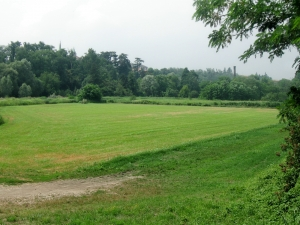 The San Francisco Chronicle reported this week on a positive move towards safety in California’s agricultural arena. Manufacturers of methyl iodide, a pesticide used in growing strawberries, have announced that the product will be pulled from the market in California and throughout the United States. Arysta LifeScience Corporation, a Japanese company, has cited economic factors in the decision to discontinue sales. The company has also voluntarily cancelled its registration permitting the sale of methyl iodide in California.
The San Francisco Chronicle reported this week on a positive move towards safety in California’s agricultural arena. Manufacturers of methyl iodide, a pesticide used in growing strawberries, have announced that the product will be pulled from the market in California and throughout the United States. Arysta LifeScience Corporation, a Japanese company, has cited economic factors in the decision to discontinue sales. The company has also voluntarily cancelled its registration permitting the sale of methyl iodide in California. 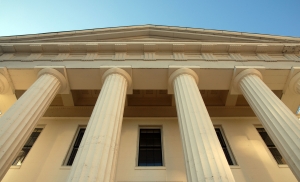
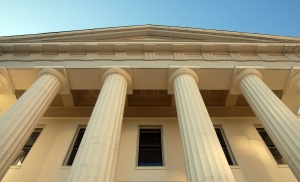 The most likely reason to bring a class action suit in federal court, instead of state court, is the diversity doctrine. This means that the suit involves at least one plaintiff who is a citizen of a different state than one or more of the defendants. For these purposes, companies are citizens of the state where they have their principle place of business. In order to file as a federal class, the plaintiffs must show four things: 1) Commonality (one or more issues is common to the whole class and, often, these common issues dominate over individual matters); 2) Adequacy (the selected representative can effectively protect the interests of all members of the class); 3) Numerosity (the class is large enough that individual lawsuits are not practical, making a class action a better method for resolving the matters); and 4) Typicality (the claim of the representative stems from a wrong to the class and is typical of the claims of the class members). These requirements aim to make sure that a class action is the best method for resolving a dispute and that a proper lead plaintiff is selected to represent the class in court.
The most likely reason to bring a class action suit in federal court, instead of state court, is the diversity doctrine. This means that the suit involves at least one plaintiff who is a citizen of a different state than one or more of the defendants. For these purposes, companies are citizens of the state where they have their principle place of business. In order to file as a federal class, the plaintiffs must show four things: 1) Commonality (one or more issues is common to the whole class and, often, these common issues dominate over individual matters); 2) Adequacy (the selected representative can effectively protect the interests of all members of the class); 3) Numerosity (the class is large enough that individual lawsuits are not practical, making a class action a better method for resolving the matters); and 4) Typicality (the claim of the representative stems from a wrong to the class and is typical of the claims of the class members). These requirements aim to make sure that a class action is the best method for resolving a dispute and that a proper lead plaintiff is selected to represent the class in court.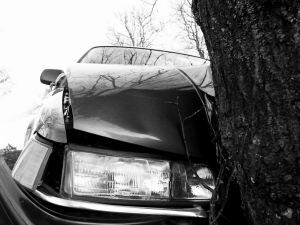 The San Francisco Chronicle is reporting on a fatal early morning crash in the Oakland hills. The crash occurred around 4:20 A.M. on Highway 13 in the area south of the Park Boulevard exit. A large tree that reportedly measured nearly forty feet in height had fallen into the roadway, spanning all southbound lanes of the freeway. Four passengers were in Toyota Camry when it hit the fallen tree. The driver stopped the car in the center median and all four passengers stepped into the right shoulder of the highway. A second vehicle, a Ford F-150 pickup truck, then hit the tree, causing the truck to become airborne and strike the occupants of the Camry. Nineteen year-old Kevin Lacanlale, the driver os the Camry was killed. Lacanlale, who was living in San Leandro, was a UC Berkeley student and originally came from Washington state. One of the Toyota’s passengers was trapped when the crash knocked a portion of the fallen tree onto an embankment. She was freed by Oakland firefighters using a chainsaw. The driver of the pickup-truck, a fifty-nine year old man from Pittsburg, and the surviving passengers from the Camry were taken to the hospital and treated for injuries that were not life-threatening.
The San Francisco Chronicle is reporting on a fatal early morning crash in the Oakland hills. The crash occurred around 4:20 A.M. on Highway 13 in the area south of the Park Boulevard exit. A large tree that reportedly measured nearly forty feet in height had fallen into the roadway, spanning all southbound lanes of the freeway. Four passengers were in Toyota Camry when it hit the fallen tree. The driver stopped the car in the center median and all four passengers stepped into the right shoulder of the highway. A second vehicle, a Ford F-150 pickup truck, then hit the tree, causing the truck to become airborne and strike the occupants of the Camry. Nineteen year-old Kevin Lacanlale, the driver os the Camry was killed. Lacanlale, who was living in San Leandro, was a UC Berkeley student and originally came from Washington state. One of the Toyota’s passengers was trapped when the crash knocked a portion of the fallen tree onto an embankment. She was freed by Oakland firefighters using a chainsaw. The driver of the pickup-truck, a fifty-nine year old man from Pittsburg, and the surviving passengers from the Camry were taken to the hospital and treated for injuries that were not life-threatening.